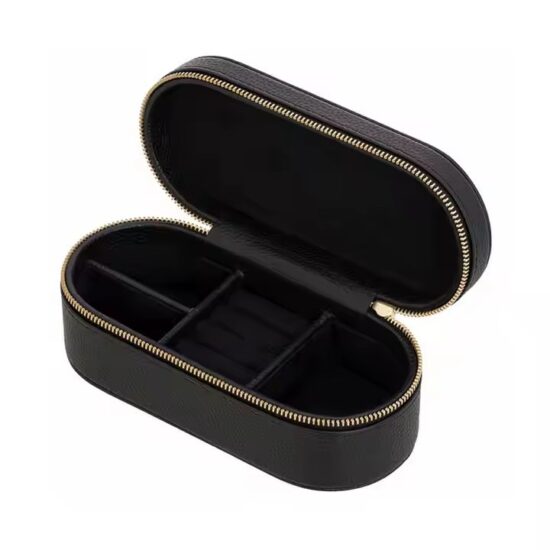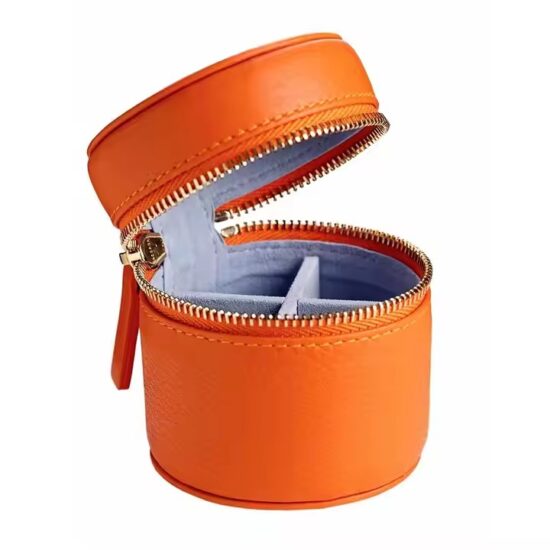jay@nbdho.com
Key Factors That Affect the Quality of Genuine Leather Jewelry Boxes
Key Factors That Affect the Quality of Genuine Leather Jewelry Boxes
Genuine leather jewelry boxes are prized for their luxury, durability, and timeless appeal. However, not all leather boxes are created equal. Several key factors determine the overall quality, affecting aesthetics, functionality, and longevity.
Understanding these elements will help you make informed choices—whether you’re a brand selecting packaging or a consumer investing in a premium jewelry box.
1. Leather Grade and Type
The foundation of quality begins with the leather itself.
-
Full-grain leather offers the highest durability and natural texture
-
Top-grain leather is slightly processed for smoothness but remains high-quality
-
Lower-grade genuine leather may be corrected grain or split leather, which impacts durability and appearance
-
The source of leather (cowhide, goatskin, sheepskin) also affects texture and softness
Higher-grade leather boxes typically last longer and develop a rich patina over time.
2. Craftsmanship and Construction
Skillful craftsmanship directly influences box quality.
-
Precision in cutting, stitching, and assembling leather panels ensures neat edges and durability
-
The way leather is wrapped around the structure affects both look and feel
-
Attention to detail in lining attachment and compartment fitting enhances usability
-
High-quality wood or rigid base materials support leather and maintain shape
Superior workmanship reduces wear and improves user experience.
3. Interior Lining Materials
The interior protects valuable jewelry and impacts perceived quality.
-
Soft materials like velvet, suede, or microfiber prevent scratching and abrasion
-
Linings should be securely attached and free of wrinkles or loose fibers
-
Some luxury boxes use natural fabrics or eco-friendly linings for added value
A well-chosen lining complements leather exteriors and safeguards contents.
4. Hardware and Accessories
Closures, hinges, and other hardware elements matter.
-
Durable magnetic snaps, clasps, or locks maintain closure integrity
-
Hinges should operate smoothly without squeaks or looseness
-
Metal components may be plated or stainless steel for corrosion resistance
-
Embellishments like engraved logos or metal badges add to perceived value
Quality hardware ensures functionality and enhances aesthetics.
5. Finishing and Tanning Processes
The treatment of leather affects appearance and durability.
-
Use of vegetable tanning results in eco-friendlier, supple leather
-
Chrome tanning produces softer leather but may be less sustainable
-
Surface finishes such as natural oils, waxes, or protective coatings guard against stains and wear
-
Uniform color application and avoidance of defects signal good finishing
Proper finishing prolongs the box’s life and keeps it looking premium.
6. Design and Functionality
Good design balances beauty with practicality.
-
Compartment layout tailored for rings, necklaces, bracelets, or sets
-
Secure padding and inserts to protect delicate pieces
-
Ergonomic size and weight for ease of use and storage
Thoughtful design ensures the box is both attractive and user-friendly.
📦 Conclusion
The quality of a genuine leather jewelry box depends on multiple interconnected factors—from leather grade and skilled craftsmanship to lining choice, hardware quality, and finishing techniques. Brands and consumers who understand these elements can better select boxes that not only look luxurious but also stand the test of time.
Investing in quality details translates into a superior unboxing experience and lasting customer satisfaction.





